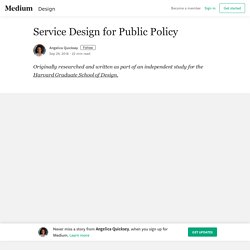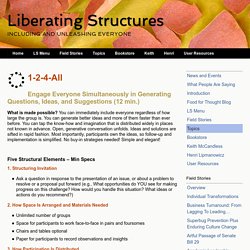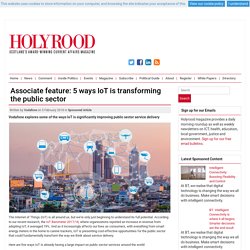

COVID-19 Response: Microsoft Teams Scenario Collection for Local Government. Making Teams Available for Everyone Teams is a part of Office 365.

If your organization is licensed for Office 365, you already have it. We are making 6 months of Office 365 E1 (including Microsoft Teams) available for everyone else. Please contact your Microsoft account manager for more details and visit the blog post below. Our commitment to customers during COVID-19 FastTrack: The FastTrack Center Benefit for Office 365 helps organizations accelerate deployment, migration, and adoption of their Microsoft 365 subscriptions at no additional cost when you have at least 150 users.
To request assistance for your Teams project, read Requesting FastTrack assistance for Microsoft 365 just got easier. Helen Bevan sur Twitter : "#HBonmymind Oct 20: What's the difference between improvement & innovation? There's a big difference in answer depending on whether the definer is principally an improver or an innovator. I think this is a helpful answer. Via @D. Service Design for Public Policy – Angelica Quicksey. Public services include everything from providing public infrastructure like trains and roads, to collecting taxes, processing immigration requests, issuing passports, and providing social benefits.

While the private sector has been employing design methodologies popularized by design consulting firms like IDEO and frog to improve product development and customer experience for decades, the public sector has lagged behind.[1] Originally developed in 1982, service design is an approach used to craft services holistically, considering both front-end and back-end processes and multichannel touchpoints from physical to digital interactions. In recent years, government agencies have begun looking to this practice to improve service delivery in health, immigration, social services, transportation and more.
In this piece, I explore the tools of service design, the opportunities and challenges such an approach offers in the public sector, as well as how we might think about impact. Service Blueprints - Communicating the Design of Services. Service blueprints were first described by Lynn Shostack, a banking executive, back in 1982 in the Harvard Business Review.

They’ve become popularized over the last few years as service design has grown as a profession. In addition to being useful in service design they are often used by operational management to gauge the efficiency of work within an organization. A service blueprint is, in essence, an extension of a customer journey map. A customer journey map specifies all the interactions that a customer will have with an organization throughout their customer lifecycle – the service blueprint goes a bit deeper and looks at all the interactions both physical and digital that support those customer interactions and adds a little more detail to the mix. The blueprint is usually represented in a diagram based on swim lanes (each lane being assigned to a specific category) with interactions linked between lanes (using arrows to represent the flow of work).
1. 1-2-4-All. Engage Everyone Simultaneously in Generating Questions, Ideas, and Suggestions (12 min.)

What is made possible? You can immediately include everyone regardless of how large the group is. You can generate better ideas and more of them faster than ever before. You can tap the know-how and imagination that is distributed widely in places not known in advance. Open, generative conversation unfolds. Five Structural Elements – Min Specs 1. Ask a question in response to the presentation of an issue, or about a problem to resolve or a proposal put forward (e.g., What opportunities do YOU see for making progress on this challenge?
2. Liberating Structures Menu. Liberating Structures Menu Five conventional structures guide the way we organize routine interactions and how groups work together: presentations, managed discussions, open discussions, status reports and brainstorm sessions.

Liberating Structures add 33 more options to the big five conventional approaches. Any one LS can change a meeting. Together they can liberate and transform an entire organization. The menu below represents version 2.2 of Liberating Structures. Liberating Structures inject tiny shifts in the protocols of how we meet, plan, decide and relate to each other that put in the hands of everyone the facilitative power once reserved for experts only. Portions of this website have been translated: French German Dutch Russian The LS Selection Matchmaker is a simple way to get started on your first string of Liberating Structures. Associate feature: 5 ways IoT is transforming the public sector. The Internet of Things (IoT) is all around us, but we're only just beginning to understand its full potential.

According to our recent research, the IoT Barometer 2017/18, where organisations reported an increase in revenue from adopting IoT, it averaged 19%. And as it increasingly affects our lives as consumers, with everything from smart energy meters in the home to canine trackers, IoT is presenting cost-effective opportunities for the public sector that could fundamentally transform the way we think about service delivery. Here are five ways IoT is already having a large impact on public sector services around the world: 1. Waste management – They say “rubbish in, rubbish out,” but what if there’s a lot more of the former?
Ecube labs, a smart waste bins manufacturer, found a solution: a solar-powered bin that compresses its contents. 2. New Zealand’s iDefigo, a CCTV equipment and services firm, provides IoT-connected smart cameras to catch perpetrators. 3. 4. 5. How-to-Achieve-and-Sustain-Government-Digital-Transformation. Improvement Service announces four ‘technology partners’ to work on digital public services. Brightsolid, a Scottish cloud solutions company that has been working with IS since 2013, has been awarded a new contract to migrate services onto the next generation of the cloud.

Edinburgh-based Wallet.Services, a graduate of the Scottish Government’s CivTech accelerator programme, will test opportunities and applications for using blockchain in public services. The fourth partner, Yoti, a UK-based digital identity platform, will look at the potential of its free app to let Scottish residents prove their age and entitlement, both online and in person. This could include proving who they are to businesses without showing paper documents, verifying age or eligibility for local or concessionary services or age-restricted items, logging into websites more securely without password and being able to confirm the identity of others they meet online.
The new contracts will begin this month. Lou Downe sur Twitter : "I wrote an article about the 15 Principles of Good Service Design for @FastCompany props to @Citymapper @GOVUK @Airbnb @thrivahealth @amazon @monzo @sh24_nhs @WayfindrStd @trov @ASOS @Deliveroo @Farewill @m.